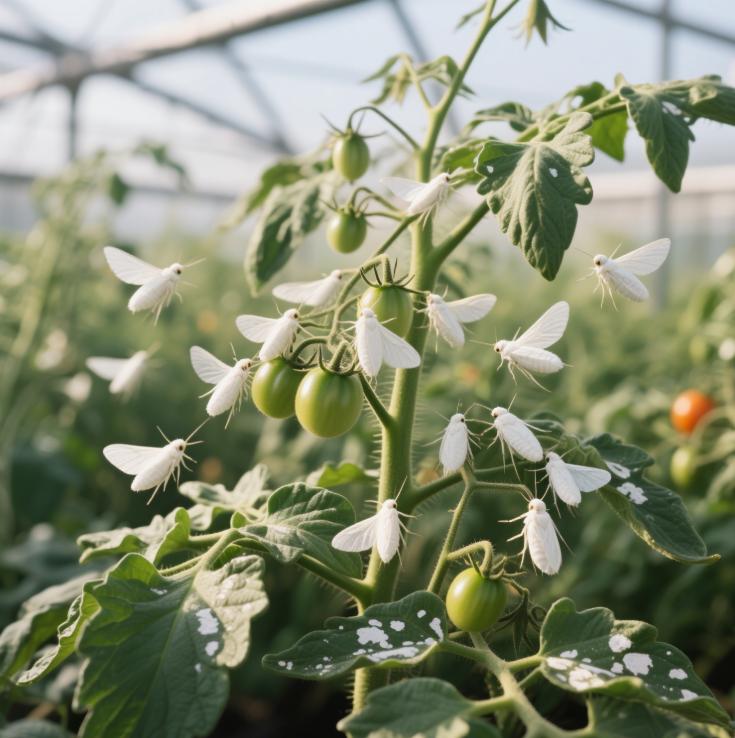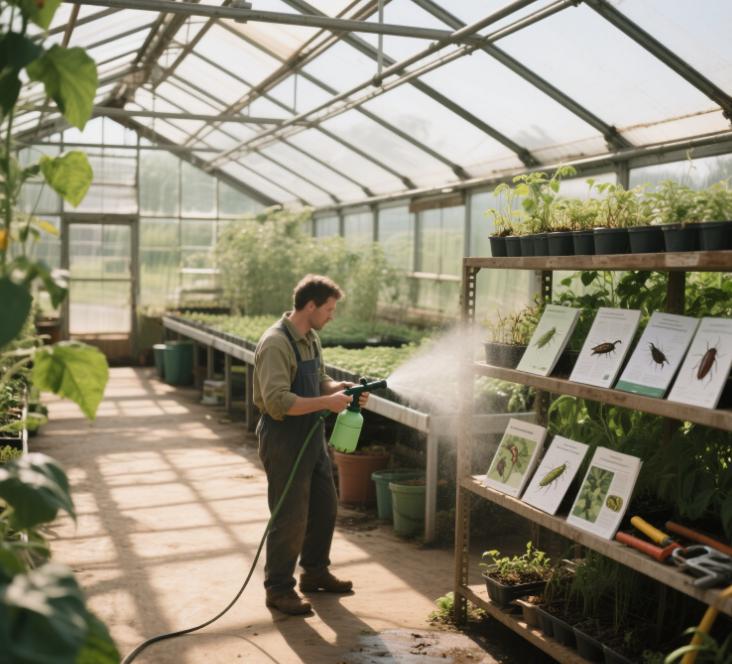When something feels "off" in your greenhouse—curled leaves, stunted flowers, or oddly shaped fruits—it’s tempting to blame the water, light, or nutrients. But sometimes, the real trouble is much smaller, sneakier, and harder to notice.
We're talking about insects—the tiny kind that quietly chew, suck, and ruin your crops before you even spot them. In the warm, humid environment of a greenhouse, pests can thrive almost unnoticed until damage is widespread.
Let’s take a closer look at three of the most common and destructive pests in greenhouses: aphids, whiteflies, and thrips. We'll explore how to recognize them, the damage they cause, and how to keep them under control using smart, sustainable strategies.
Aphids: The Green Swarm Hiding Under Leaves
Aphids are small, soft-bodied insects that often gather in large numbers on young leaves, stems, and flower buds. They feed by sucking sap from plant tissues, which can quickly lead to distorted leaves and stunted growth. As they feed, they excrete a sugary substance called honeydew, which promotes the growth of black sooty mold and attracts other pests.
Aphids also spread plant viruses, making them a double threat in enclosed ‘environments like greenhouses where air circulation is limited.
How to manage aphids:
Hang yellow sticky traps around the greenhouse to monitor and reduce population levels
Introduce natural predators like ladybugs or lacewings
Rotate systemic insecticides such as imidacloprid and acetamiprid to avoid resistance
Avoid excessive nitrogen fertilization, which makes plants more attractive to aphids

Whiteflies: Tiny White Fliers, Big Trouble
Whiteflies are small, moth-like insects that rest on the undersides of leaves. They flutter up when disturbed, making their presence easy to spot. But don’t be fooled—they may look delicate, but they can cause significant damage.
Both adults and larvae suck sap, weaken the plant, and leave behind honeydew, which again leads to sooty mold. They’re also notorious for transmitting viral diseases, especially in tomatoes, cucumbers, and ornamental plants.
How to manage whiteflies:
Ensure good ventilation and airflow to discourage pest build-up
Hang yellow sticky traps to capture adult whiteflies
Release Encarsia formosa, a parasitic wasp that lays its eggs inside whitefly nymphs
Apply insecticides like bifenthrin or flupyradifurone, with careful rotation to avoid resistance
Thrips: Invisible Invaders That Scar Flowers and Fruits
Thrips are tiny, slender insects that often go unnoticed until serious damage appears. They feed by puncturing plant cells and sucking out the contents, leaving silver or brown streaks on leaves, petals, and fruit surfaces.
They hide deep within flower buds or leaf folds, making them hard to detect and difficult to treat. Thrips are also vectors for viruses such as Tomato Spotted Wilt Virus, which can ruin an entire crop if left unchecked.
How to manage thrips:
Install blue sticky traps, which attract thrips better than yellow ones
Use fine-mesh insect netting to cover vents and other entry points
Release predatory mites like Amblyseius swirskii to reduce populations naturally
Apply spinosad or thiamethoxam selectively, avoiding overuse to maintain efficacy

Integrated Pest Management Works Best
The most effective way to keep pests under control isn't a one-time pesticide spray. It's about combining different strategies in a smart, integrated system.
Start with regular monitoring. Use sticky traps and visual inspections to detect pest outbreaks early. Maintain a clean, well-ventilated greenhouse to reduce pest-friendly conditions.
Combine biological controls with chemical treatments. Use beneficial insects to keep pest populations in check, and apply selective insecticides only when necessary. Rotate between products with different modes of action to avoid pesticide resistance.
In advanced greenhouse setups, pest control can be made even smarter. Companies like Chengfei Greenhouse offer automated pest monitoring systems that collect real-time data on insect activity and environmental conditions. These systems can alert growers before infestations explode, enabling proactive treatment instead of reactive panic.
Welcome to have a further discussion with us.
Email:Lark@cfgreenhouse.com
Phone:+86 19130604657
Post time: Jul-13-2025







 Click to Chat
Click to Chat